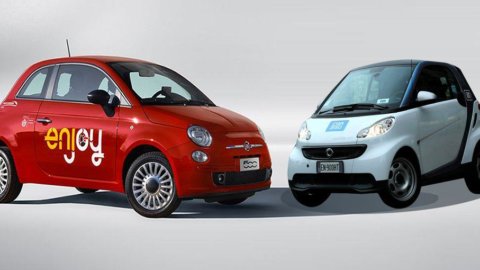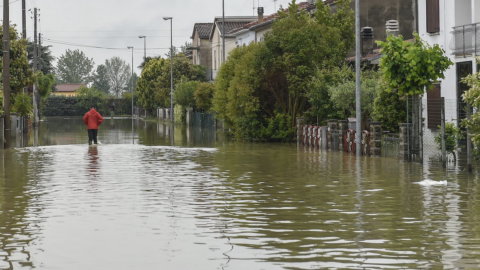Fewer and fewer Italians use a private car e more and more rely on rental or sharing. Mobility paradigms are changing, in times when affording a car is almost a luxury and public transport isn't always up to par. This is confirmed by the recent data both on car rental, through the report published a few weeks ago by Aniasa, the association of car hire companies, and on car sharing with the continuous growth of a service now present in 23 Italian cities, from the pioneering Milan to Sicily .
RENTAL – According to the Report on car rental edited by the Fleet & Mobility Study Center, that of the renters is a turnover which in 2015 is close to 5,5 billion euros, with over 700 vehicles on the road and new car registrations accounting for a quarter of the market by value. In fact, last year renters spent 6,2 billion euros to register new cars, for the first time more than what companies spent (5,7 billion).
The positive trend is also confirmed by president of Aniasa, Fabrizio Ruggiero: “The vehicle rental sector – he explains – sees turnover still growing (in 2015 up by 5,7% compared to 2014) and support for the automotive market (+18% registrations), while the offer of car sharing is expanding and consolidating in various Italian cities (647 members and 4.400 vehicles in the fleet), offering an effective alternative to owning a car and using public transport”.
The analysis by the Fleet&Mobility Study Center also shows that the additional registrations of the Nlt in 2015 represented 2% of the total market (they were 0,5% in 2013). In the same two years, sales to companies rose from 18,6% to 16,6% of the share. Impossible not to read a relationship between the two phenomena: customers who owned or leased a car and switched to leasing at the time of replacement. Even the operators of the rent-a-car (RAC) have taken advantage of the financial capacity of the NLT, acquiring a significant part of the fleet (almost 45 vehicles, up 11% compared to 2014) with the so-called rent-to-rent.
Among the causes, also that of fear of terrorism: according to analysts, in fact, during the year, rent-a-cars found demand from summer vacationers, fleeing Mediterranean destinations unfortunately marred by the terrorist threat and in order to avoid travel to sensitive places such as stations and airports. This, together with the pre-leasing request by the NLT, has pushed the turnover up to 1,1 billion euros (+4,9% compared to 2014), the highest ever. Rental days even came close to 31 million (+8%), thanks to longer average rentals (6,8 average days compared to 6,6 in the previous year), as is typical of pre-leases and also of vacation rentals. Over 94 vehicles were registered, 21% more than the almost 78 in 2014, to which must be added the vehicles taken on rent-to-rent basis by NLT operators.
CAR SHARING – As also recalled by the president of Aniasa, car sharing has also largely contributed to changing mobility habits, a phenomenon that began in 2001 with an experimental initiative by Legambiente and was offered until 2014, when Milan was the first to launch the tender for free floating opening to private companies, exclusively by public or semi-public operators in the station-based mode, which provides for the collection and return of the car in pre-established locations. Now free flow involves picking up and dropping off the car at any parking stall within a given perimeter and the car sharing is present in 23 cities (18 from the North), with a total fleet of 4.400 cars, some of which (all those of the Share'ngo operator) are electric.
According to Istat data for the whole of 2014 i fixed station services account for 1,6 users per thousand inhabitants (3 in the North and 2,4 in the large municipalities) and have 5 vehicles for every 100 inhabitants (9,3 in the North and 7,9 in the large municipalities). Compared to 2011, the number of users grew by 52,3%, but showed a slight decline on the previous year (-1,1%). Similarly, vehicle endowment increased by 39,5% compared to 2011 but marks a decrease of 3,8% in the last year.
In this case, the turning point was also ecological: bike sharing is in 60 cities with more than 11 bicycles (double that of 2011) and in Milan, where from September BMW will join the operators with a high-end fleet made up of Mini , BMW 1 Series and BMW3 electric cars, the policies for sustainable mobility (Area C in primis but also car and bike sharing, as well as the new underground lines) launched starting in 2012 have eliminated 25 million car transits in the city center in three years. A reduction of around 30%, with an average of 38 fewer cars per day in circulation in a substantial portion of a city that is all in all small in size. Reducing traffic, as is known, means reducing harmful emissions: the result of all this is not only a new social trend but a -38% of fine particles in 2014 compared to 2010 and a -59% of black carbon.





